Chester's Roman Fort is managed by English Heritage, and it was the fourth Roman fort that I visited along Hadrian's Wall so that visitors can see the escavated ruins. (A list of the others that I visited will be at the end of this post.) It was probably my favourite of the Roman forts that I visited as it is fairly well-preserved (particularly the bath house) and has impressive river and countryside views. Keep reading to learn more about this Roman fort and to see photographs of my visit.
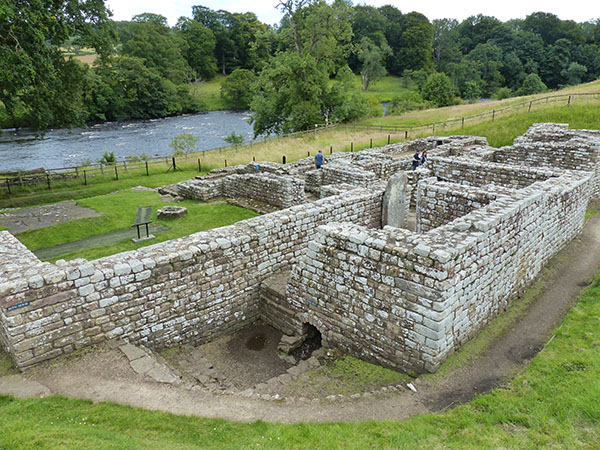
Chester's Roman Fort (or Cilurnum, as it was known by the Romans, which was possibly named from the tribe that the men belonged to), was a cavalry fort. The different forts along the wall seemed to have their own specialties, and this one was made up of a group of men from northern Spain who were regarded with their equestrian skills. They were auxilary soldiers - people from lands conquered by Rome who were paid a wage and who could become Roman citizens after a time. Before moving to Britain, they served in modern-day Hungary.
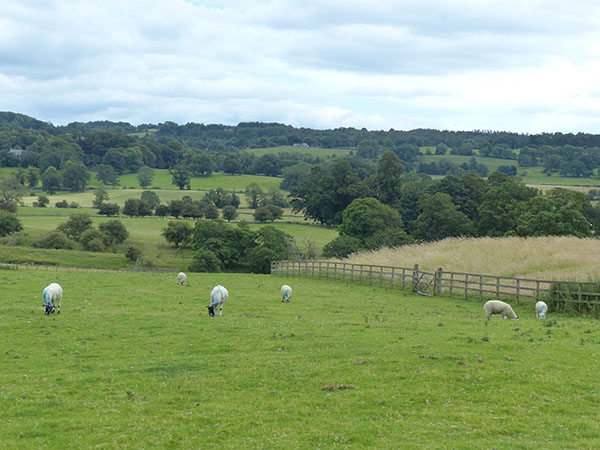
The pastures beyond the fort (outside of it) was the location of the town that grew up around the fort to support it with various activities and supplies outside of the life at the fort. In the 1830s, the land here was inherited by John Clayton, and he spent time uncovering the ruins and buying more land with ruins in order to discover the secrets the Romans left behind.

Upon entry to the site, visitors pass through the ruins of one of the gates that would have been used to enter the fortress in Roman times.

The barracks (pictured below) held roughly 500 men with 32 men to a building. The men lived in quarters with their horses in the front room with three men to a room. They had to take good care of their horses because they paid a deposit for them. Horses had to be looked after and groomed daily.
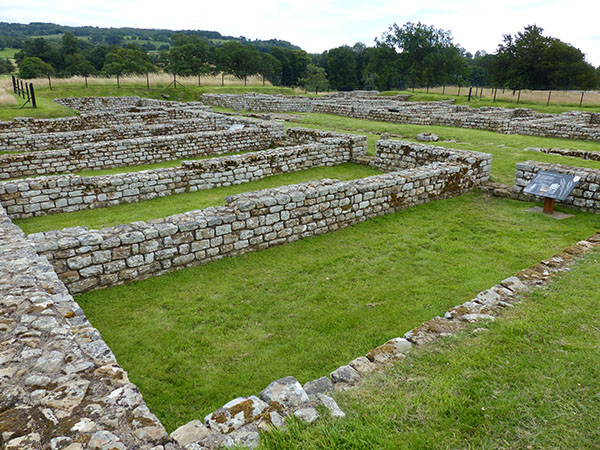
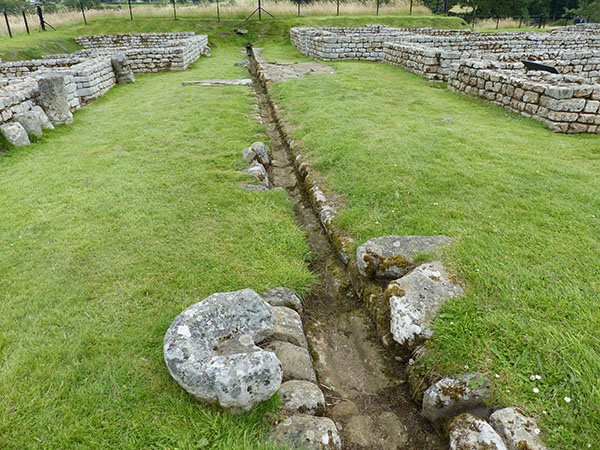
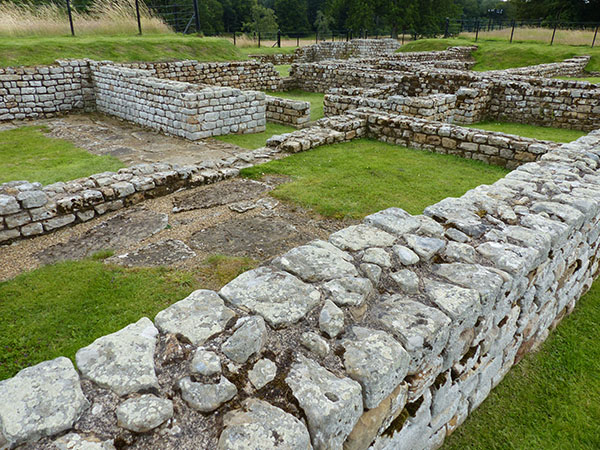
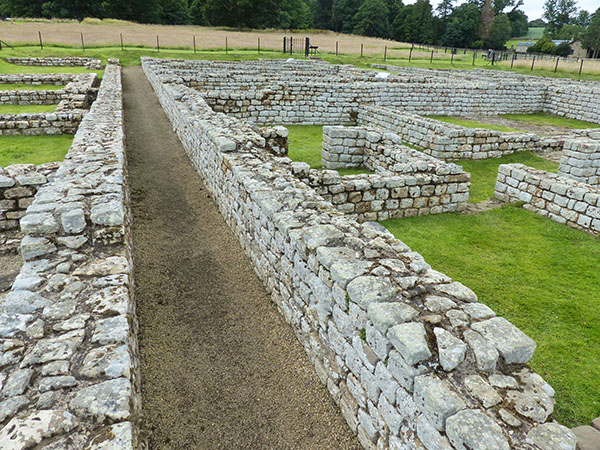
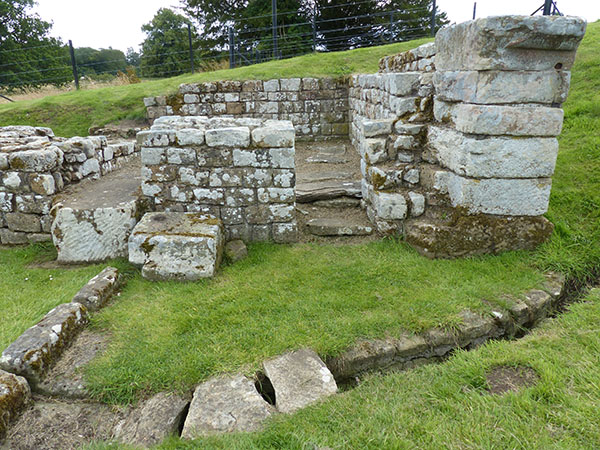
The main east gate led out of the fort to the river and the bridge. The remains of the bridge can be seen on the opposite side of the river, but there is no way to cross the river, so this must be looked at separately. The bridge would have looked impressive and imposing, and some of the information boards depicted what it would have looked like.
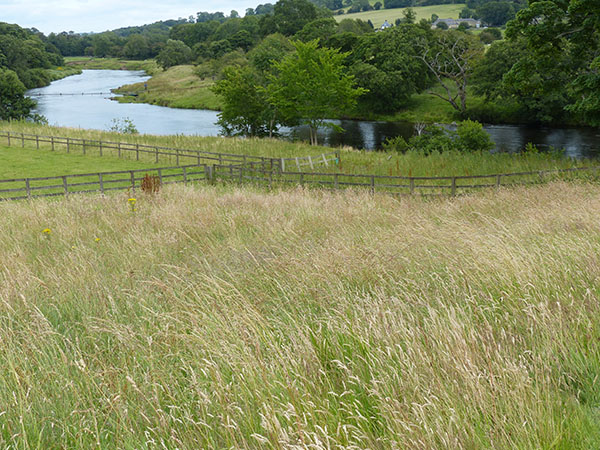
On the banks of the river is the Roman Bath. This was located outside the fort and would have been communal with soldiers and citizens outside the fort. In escavating the baths, 33 skeletons were discovered in one of the rooms, but they have disappeared before anyone could study them. Some intact mosaics were also discovered in the escavations.
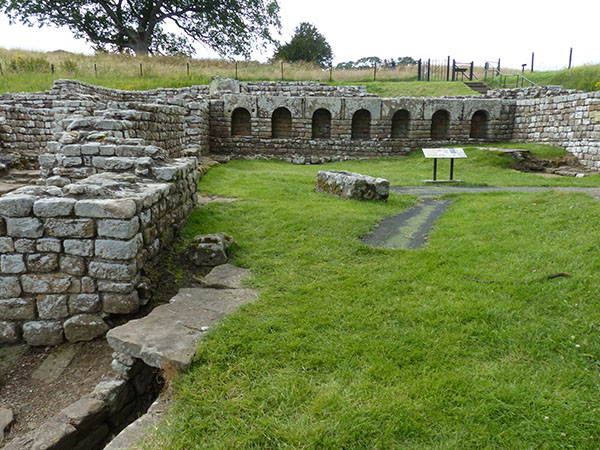
The idea of the bathing ritual was to work up a sweat through exercise or sitting in one of the hot/steam rooms in the bath house. While in the hot rooms, oil could be used on the skin to scrape off dead skin and dirt before plunging into the cooler baths to close the pores.
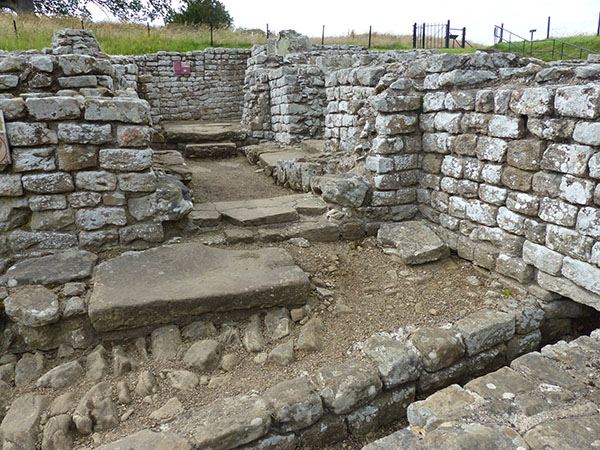
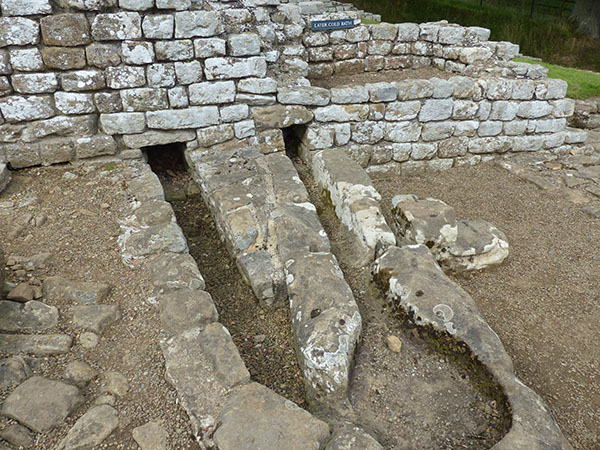
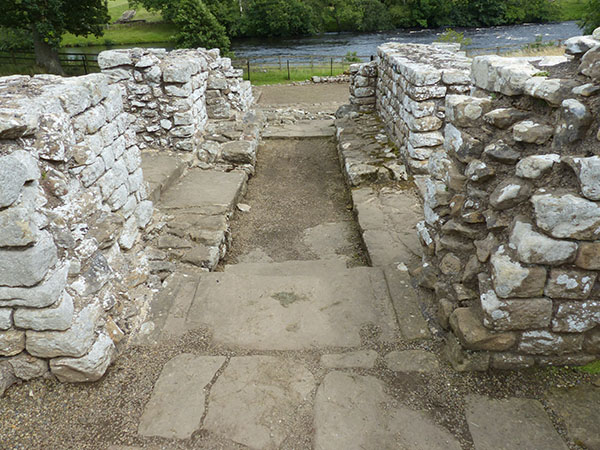
Below is one of the steam rooms near the furnance where bathers would have been seated. It had under-floor heating delivered by a furnance. I am sure this would have felt good in the cold British winter months.
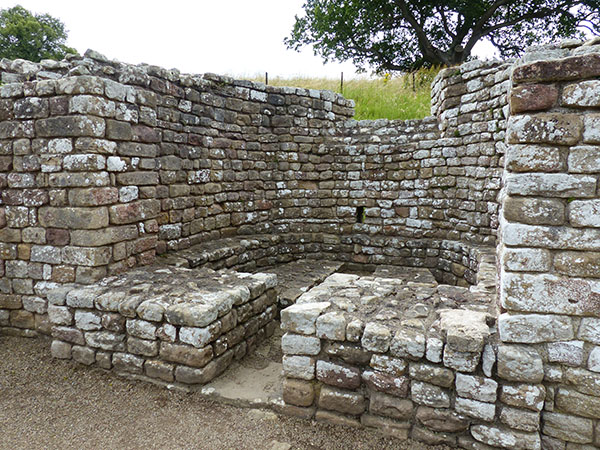
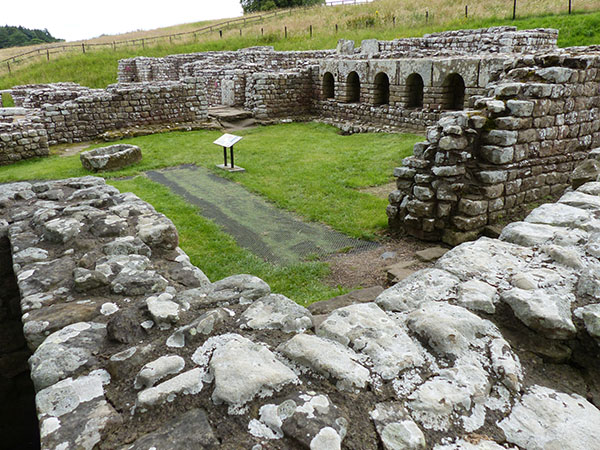
Below are the ruins of the commander's house. It looks like it had its own private bath.
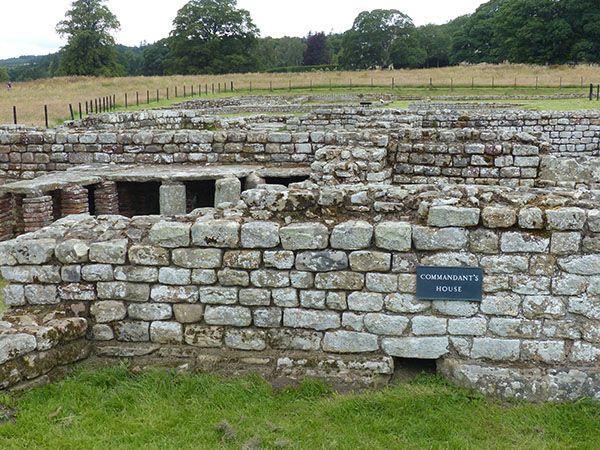

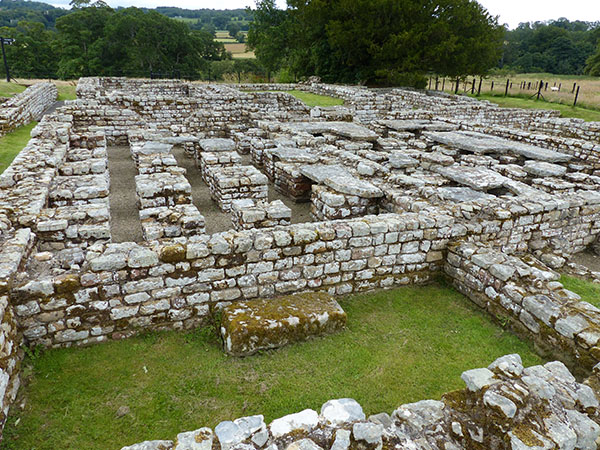
Below is the fort headquarter buildings where they would have had meetings and celebrations. It was a large building. This is also where they had a sunken treasury room for valuables.
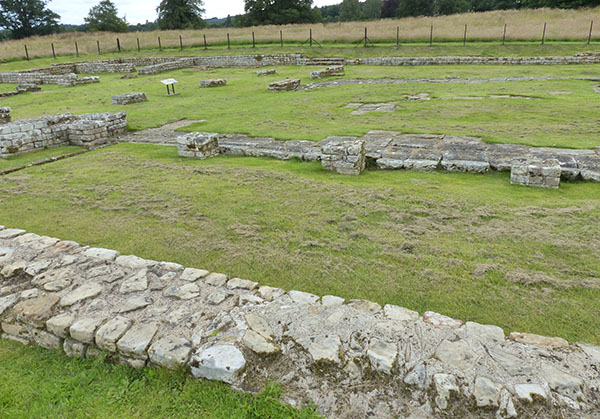
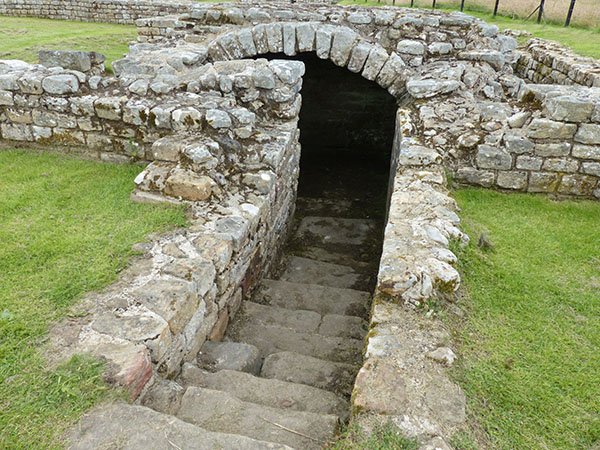
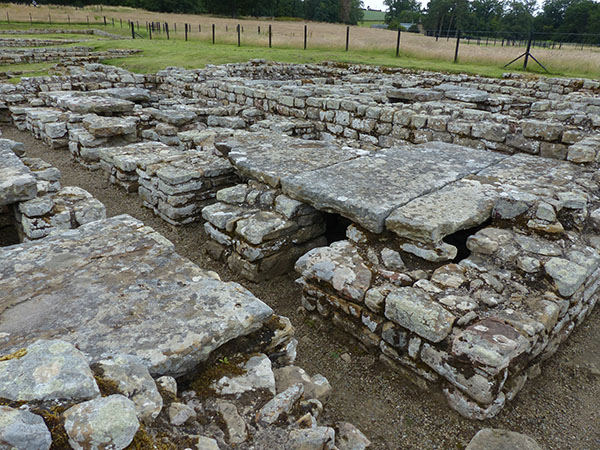
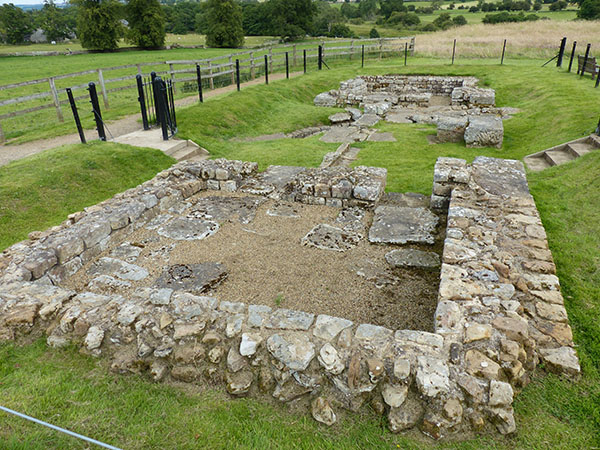
That concludes my visit to Chesters Roman Fort. Due to coronavirus, the museum was closed. I hope to return once the museum is re-opened to the public and it is safe to visit.


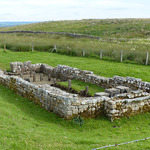
Leave a comment